Sometimes, folks want to know how a specific design developed, so here’s a little about the development of my “Flora, Fauna, & Aliens” textile design.

My design was inspired by this cotton fabric in the Victoria & Albert Museum. It’s an early 19th-century, fabric from Masulipatam in India (V&A Item IS.1765-1883). I think of it as the "bear on a golf course” pattern. Can you see why? The whole idea is here—rolling hills over populated with flora and fauna.

I started by drawing a pattern of repeating hills.

Then I added some details to confirm that the idea could work. At this point, I wasn’t trying to make a refined design—just a sketch to see what might happen if characters from my sketchbooks stood on the upper side of each of the hills.

Then another version with even more plants and animals. At this point, there were buildings, dinosaurs, devils, and other fanciful creatures that were eliminated later. It seemed like a promising design, but the overall feeling was a little bland. A bit too even.

I decided that the hills needed to be more dynamic—less flat with more sweeping diagonals. So I started over with a fresh hill pattern.
With my brush pen, I drew vegetation and creatures directly on a paper print of the new hill pattern. At this point I decided to limit the population to contemporary birds and mammals—no dinosaurs, reptiles, or mythological beings. That way, if I added aliens later, they would contrast nicely with normal animals.

The element that repeats to create the pattern is like a puzzle piece that fits perfectly with copies of itself in every direction. That’s exactly the same way traditional Indian textile printers repeat images carved into wooden blocks.
Notice that the hills repeat every 4 inches but the creatures repeat every 8 inches. I don’t know what traditional textile designs call this. I call it a double repeat—two different patterns are each repeating at different intervals. I think it makes a pattern more interesting, so I do it often.

Finally, I slipped in a flying saucer and few aliens. This guy has a ray gun for additional menace.

To complete some kind of mysterious, cosmic circle, we found a textile printer in India to print cotton fabric and make it into a variety of useful items—tea towels, apron, oven mitt, placemats, napkins, etc. The new printer is just down the road from where the inspirational “bear on a golf course” design was produced 200 years ago. That’s kind of spooky, right?
To get your paws on these kitchen and dining room textiles, visit our store.
If you want yardage fabrics or wallpaper with this pattern, you’ll find them in the Calamityware Spoonflower store.
Don
Pittsburgh, September 26, 2019

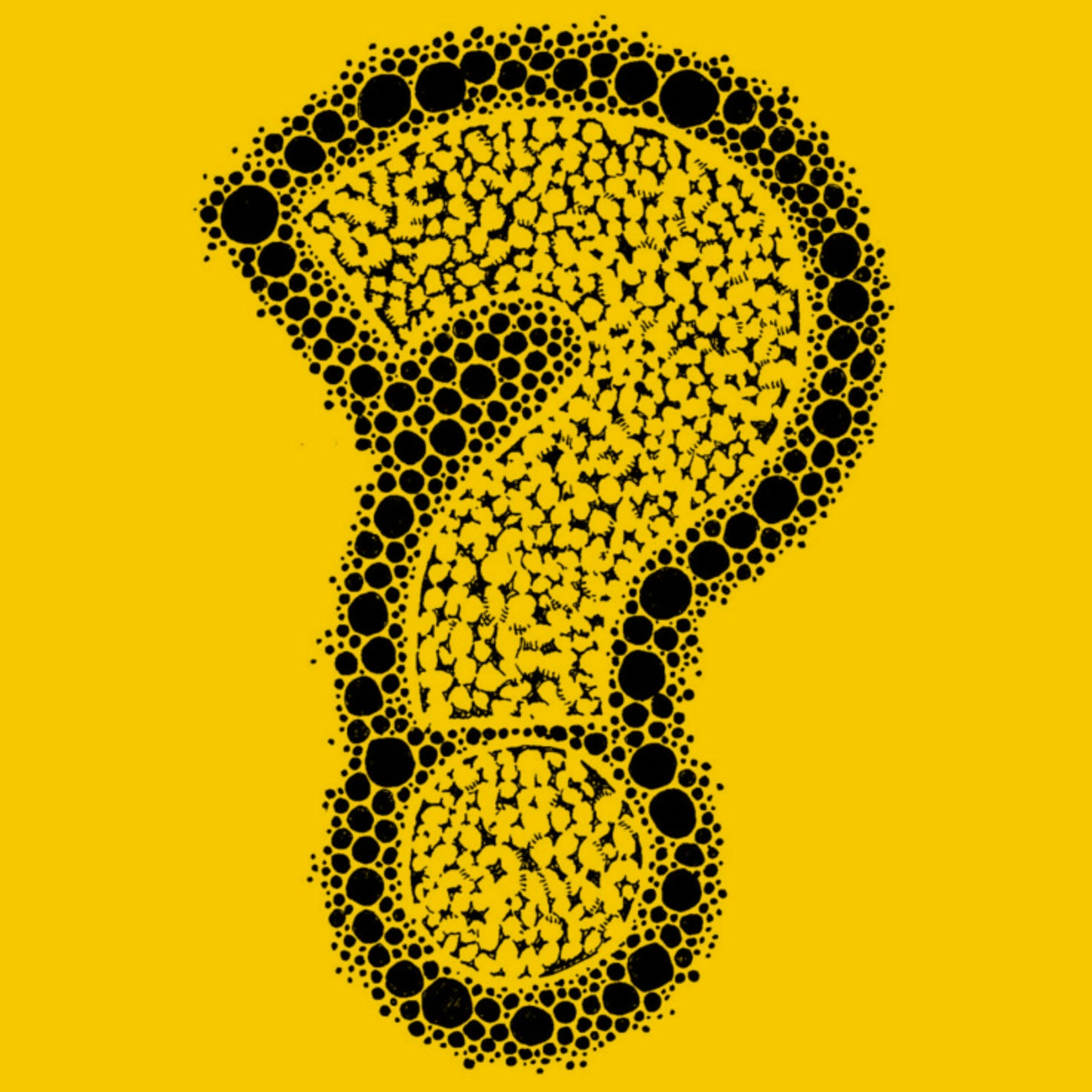
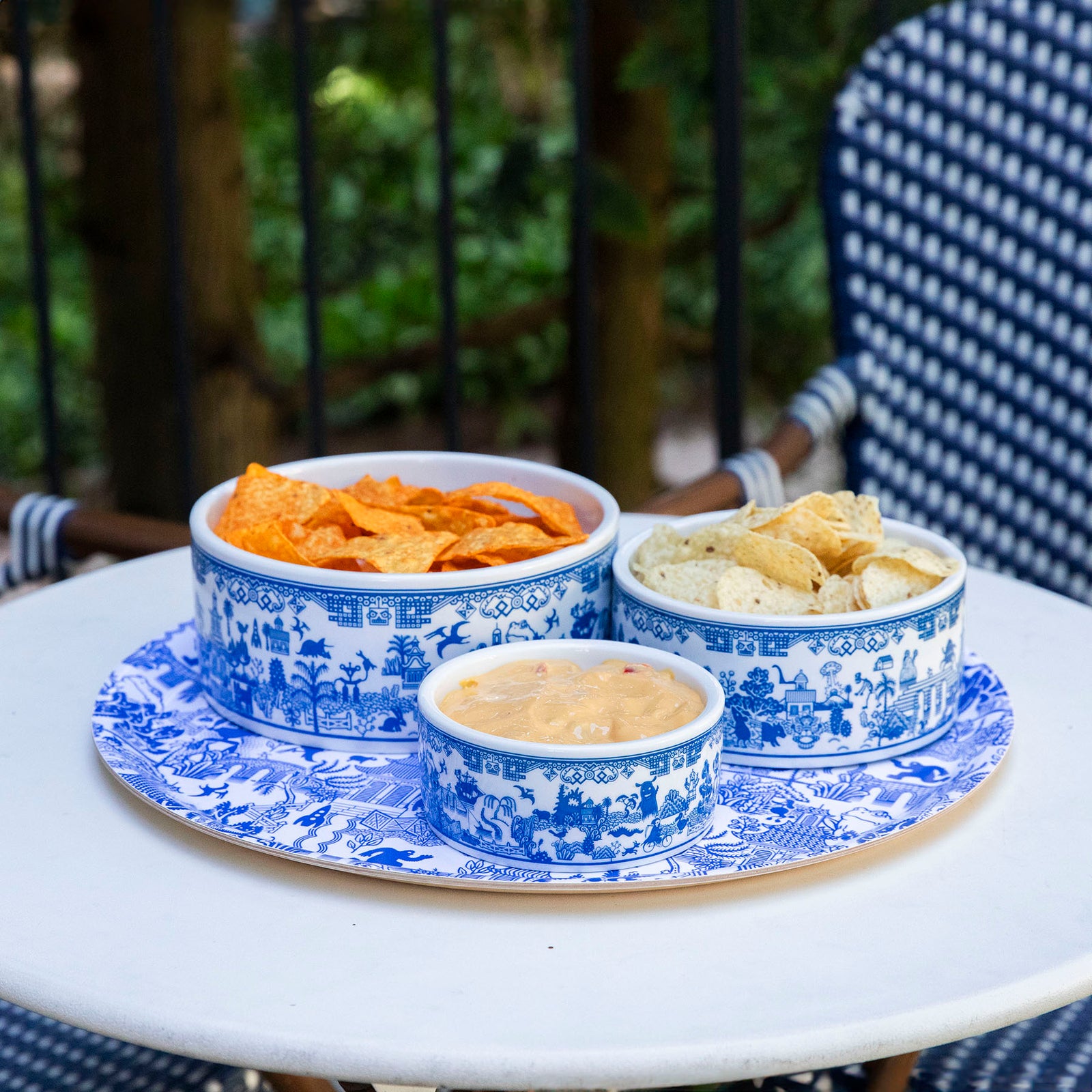
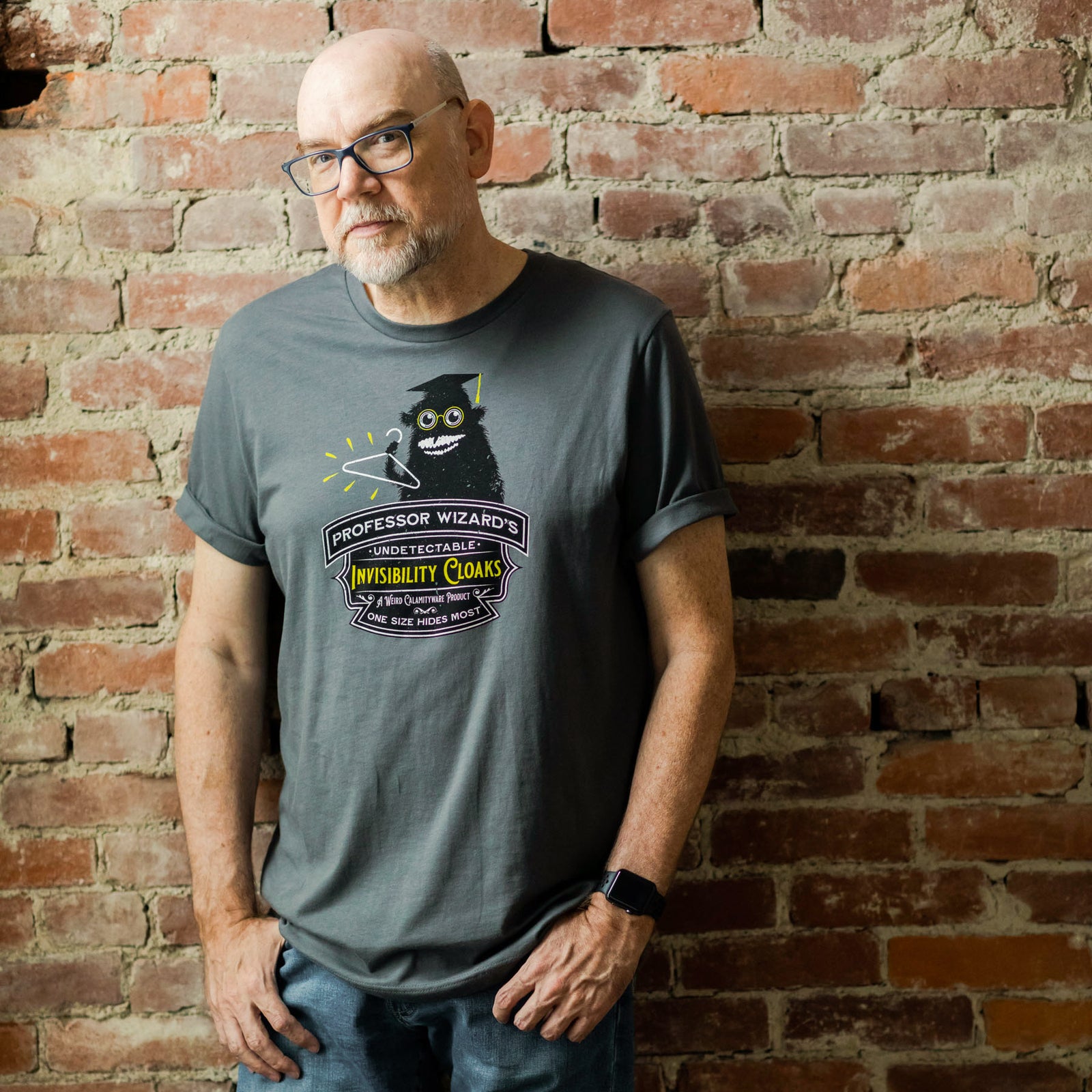


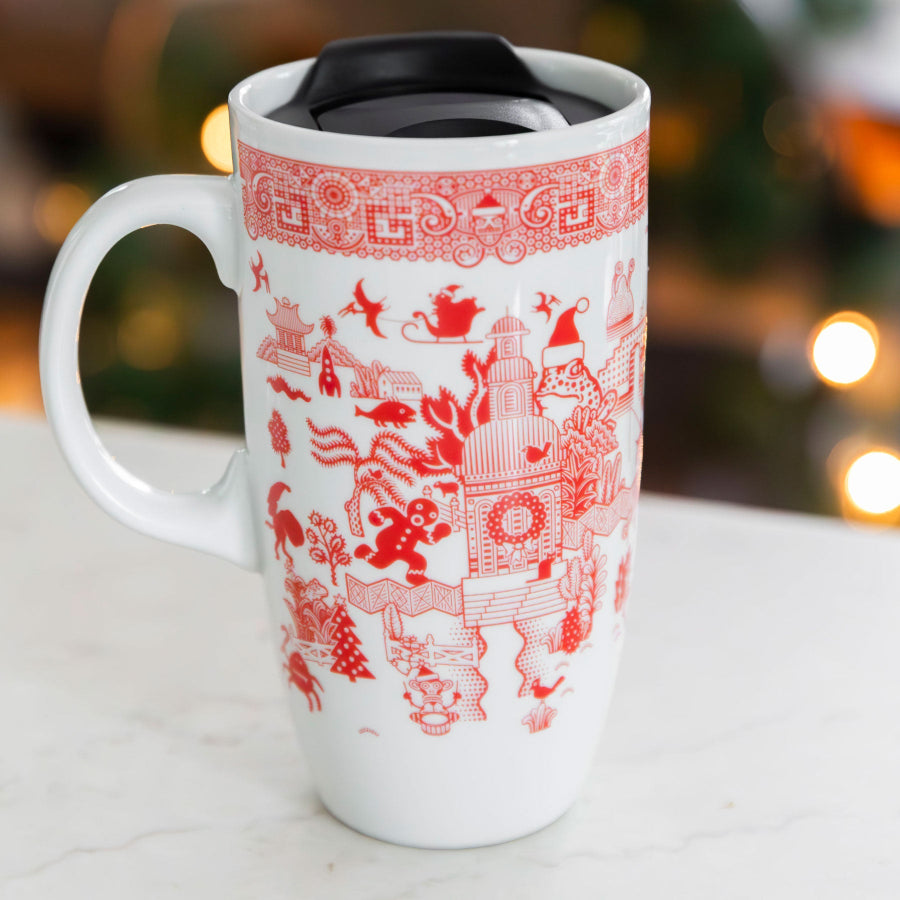

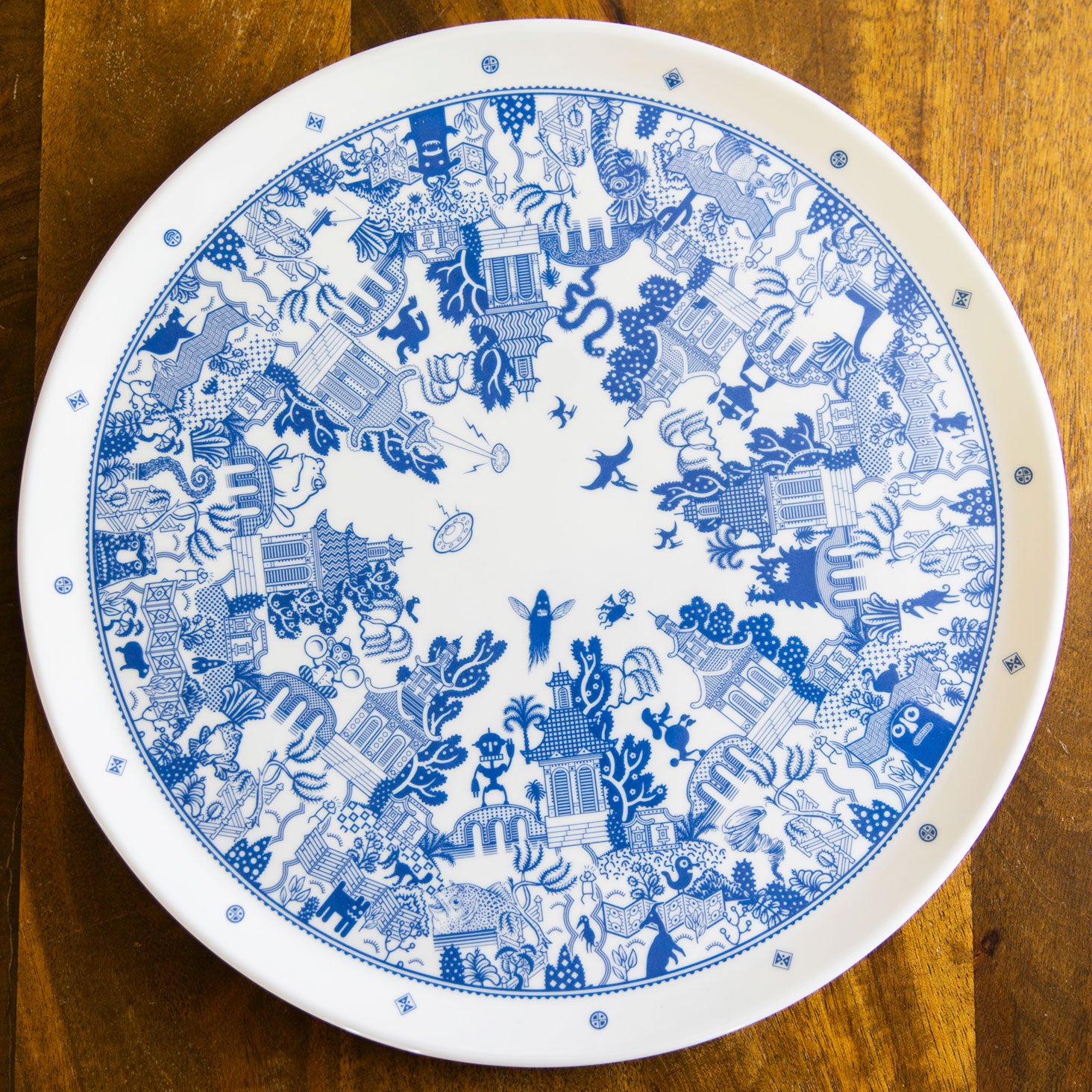
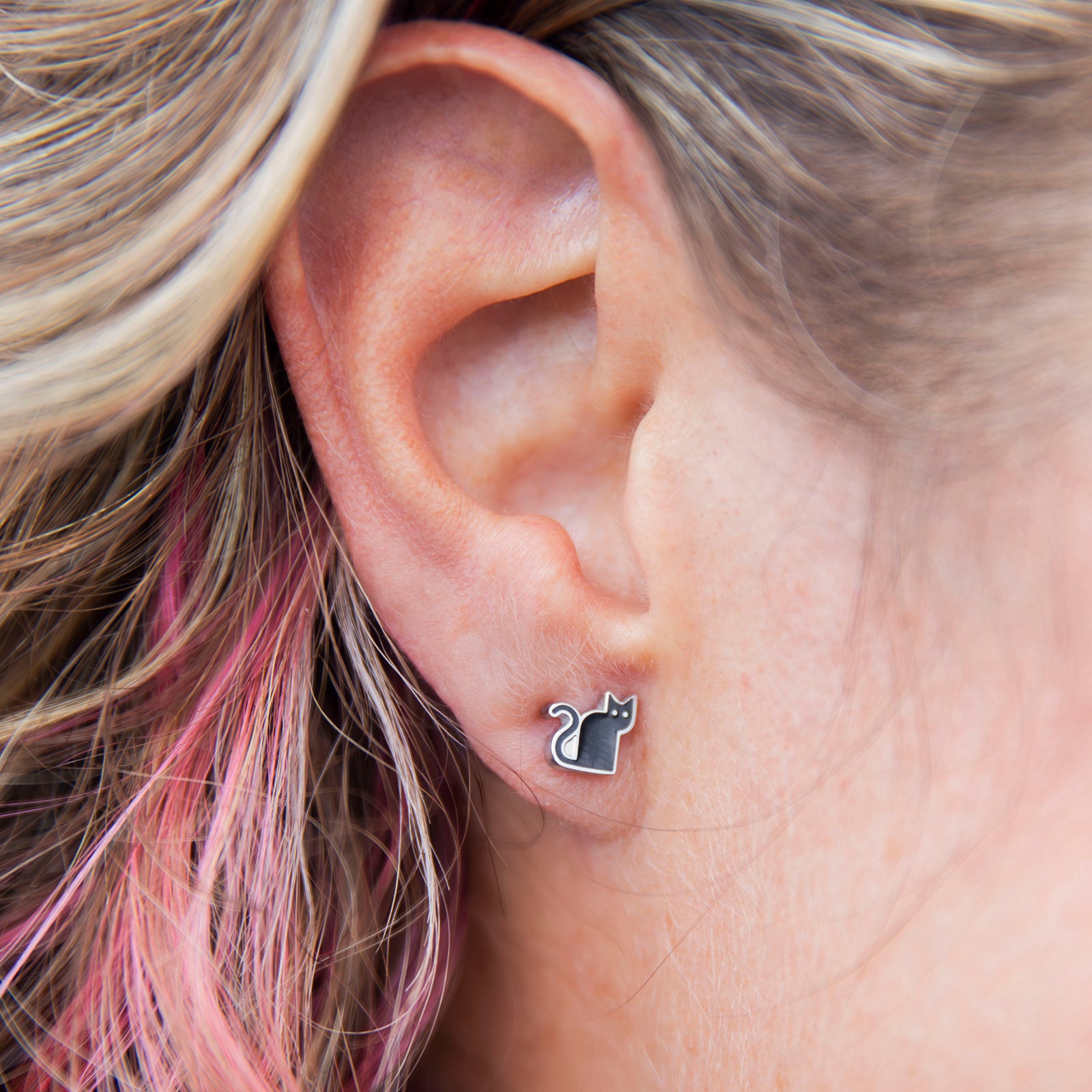


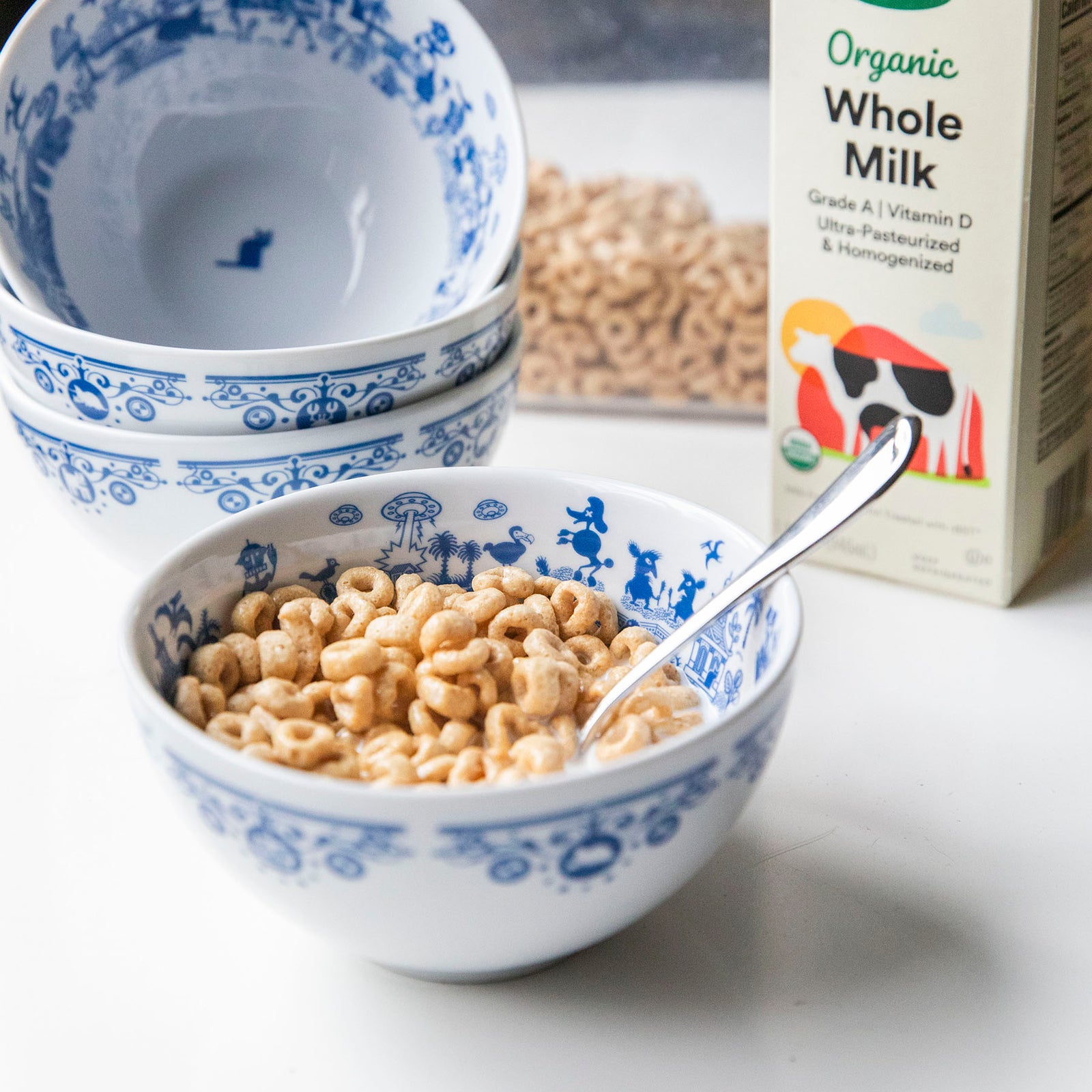


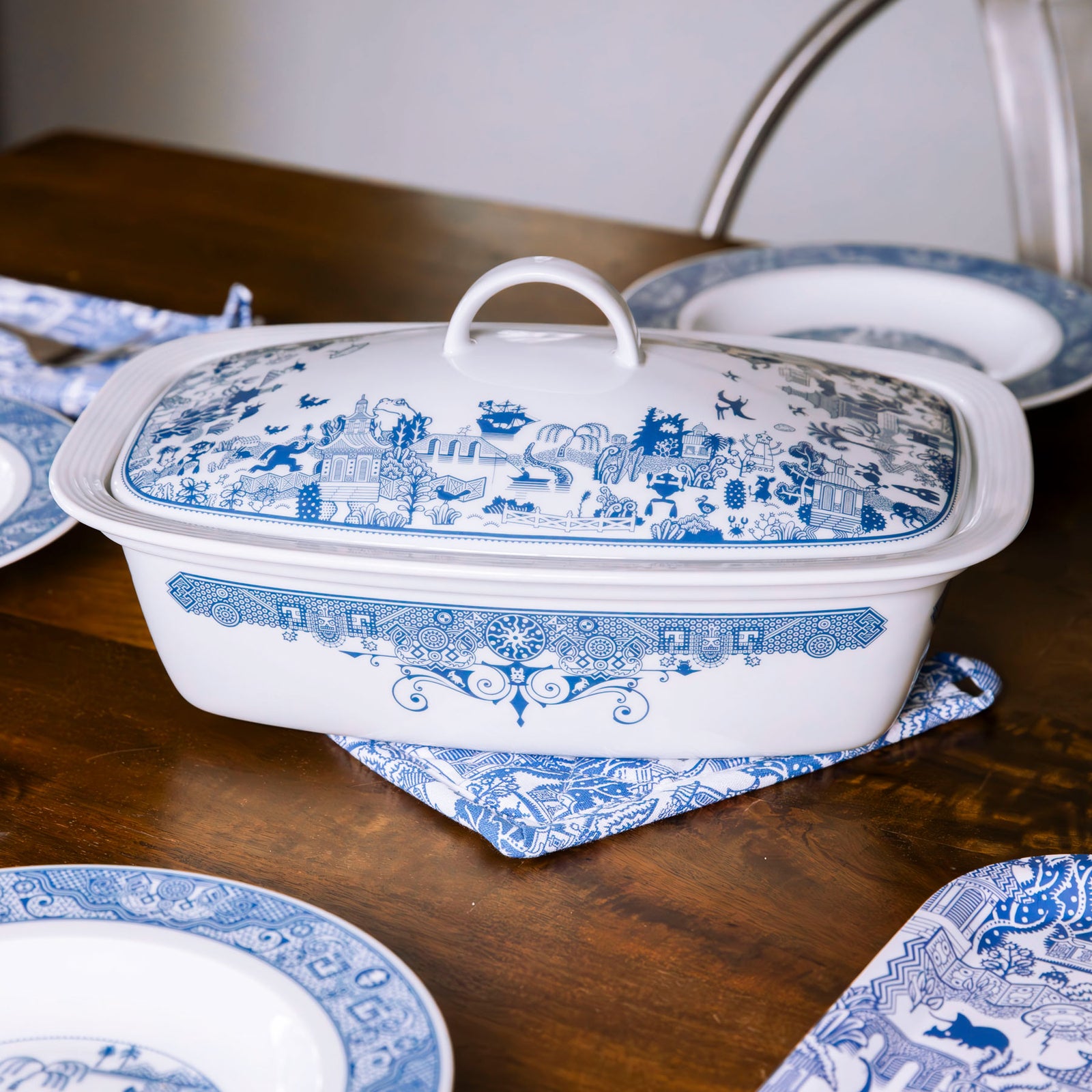


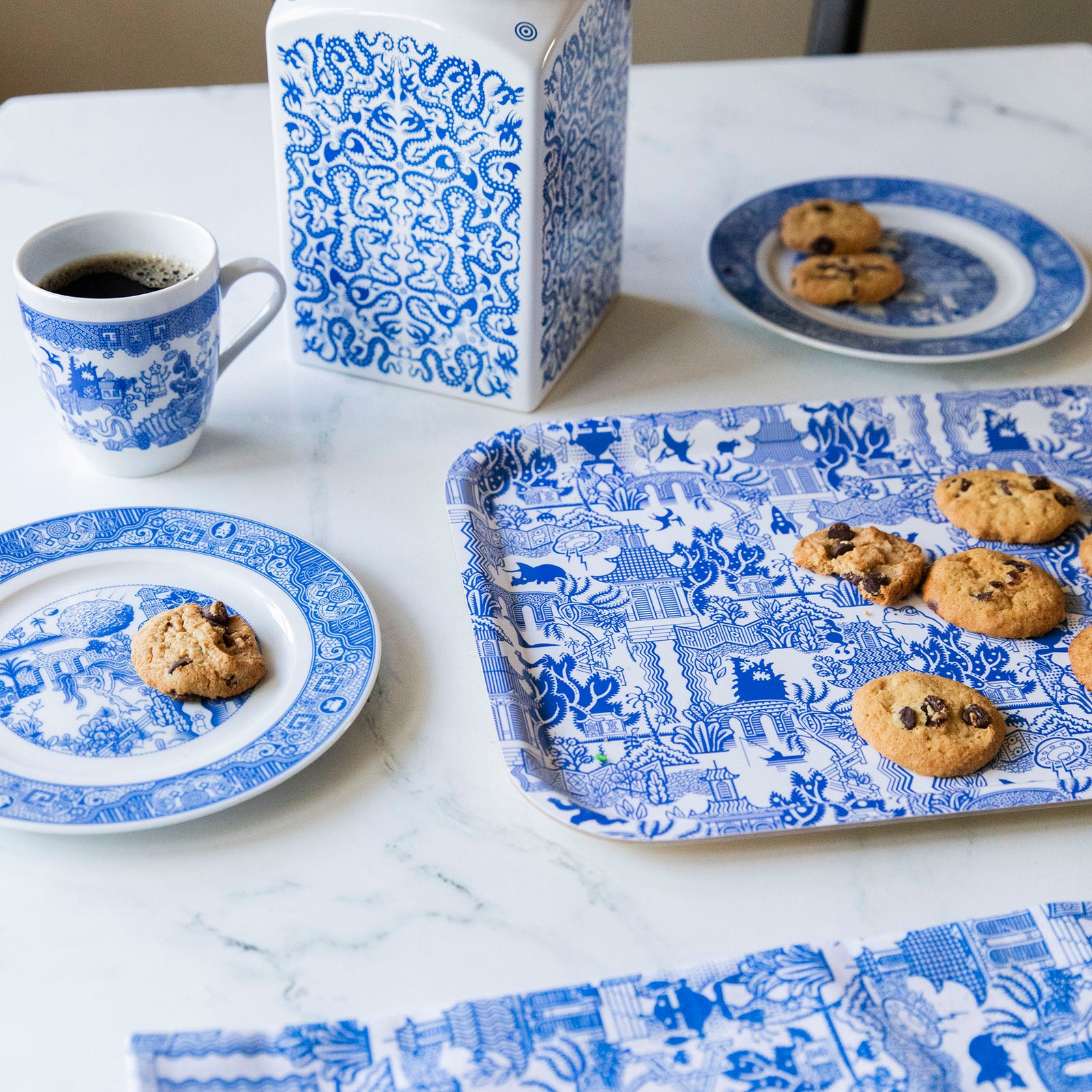

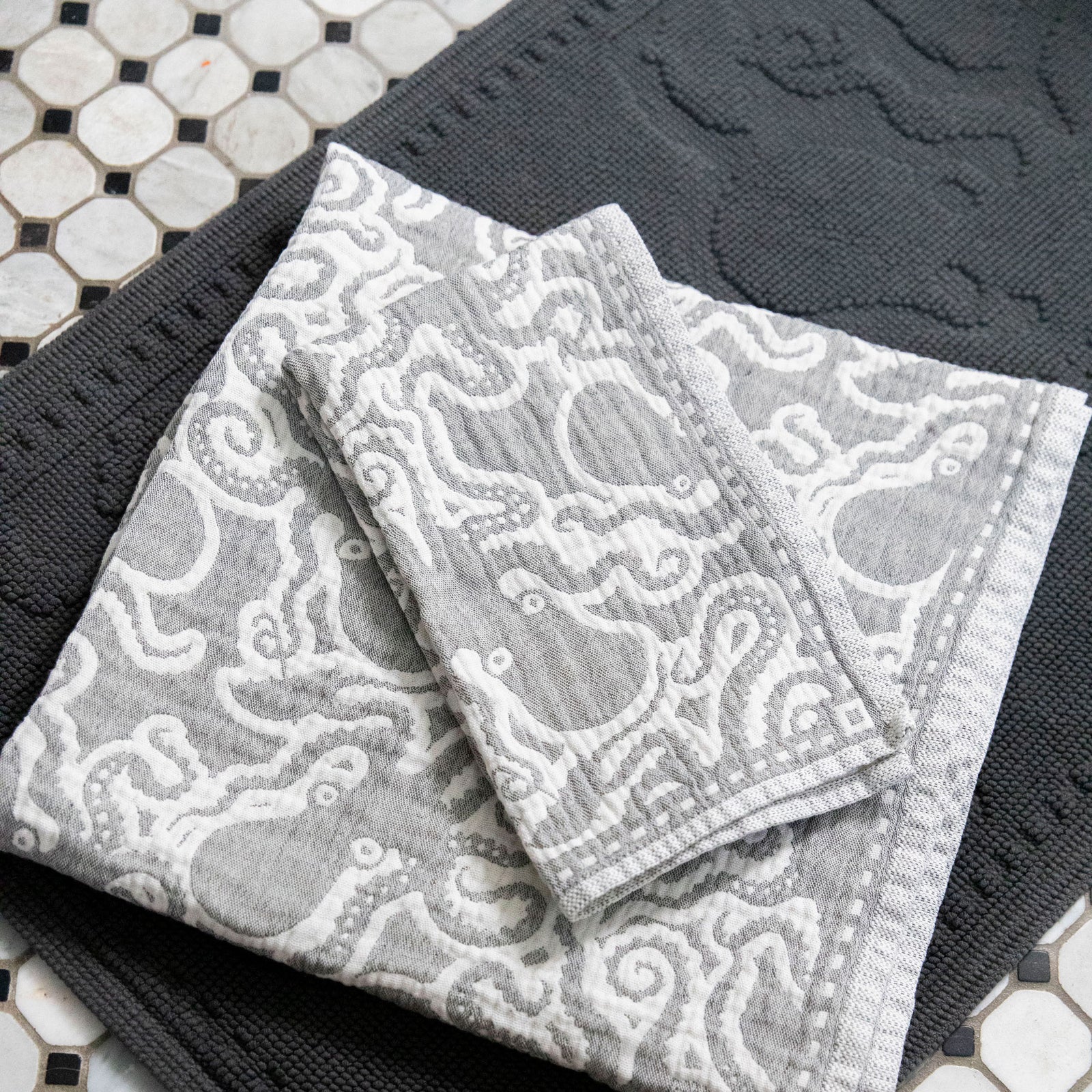

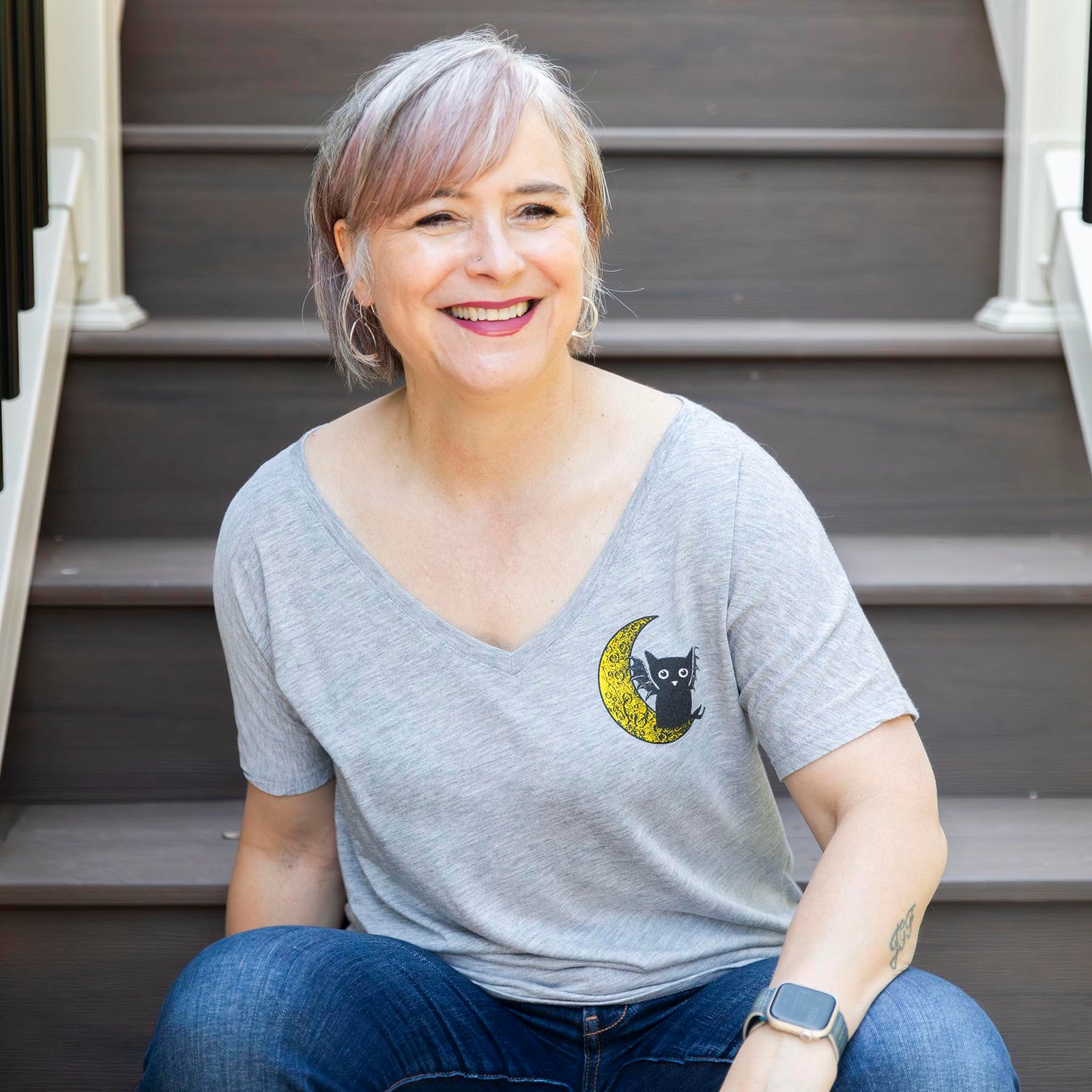

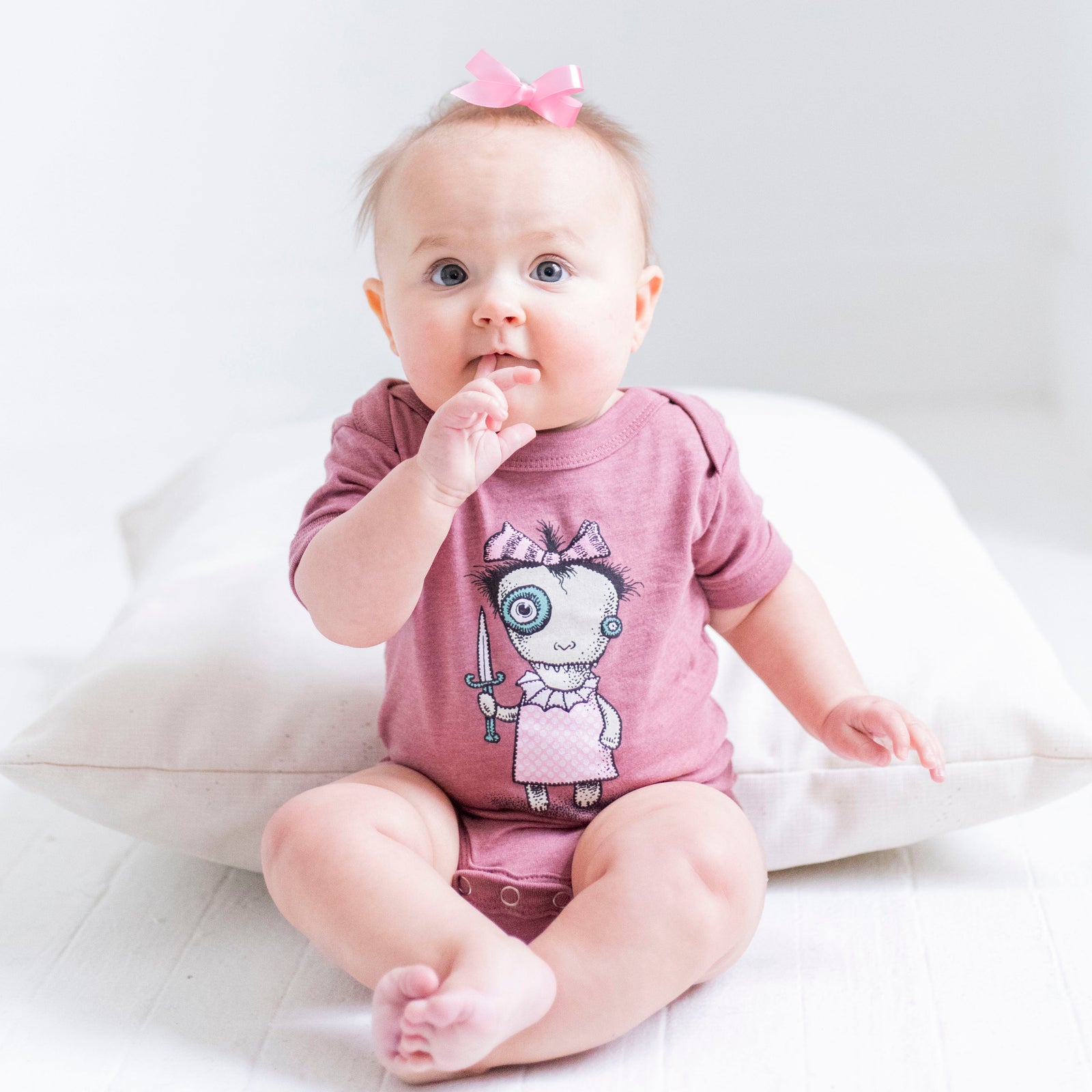
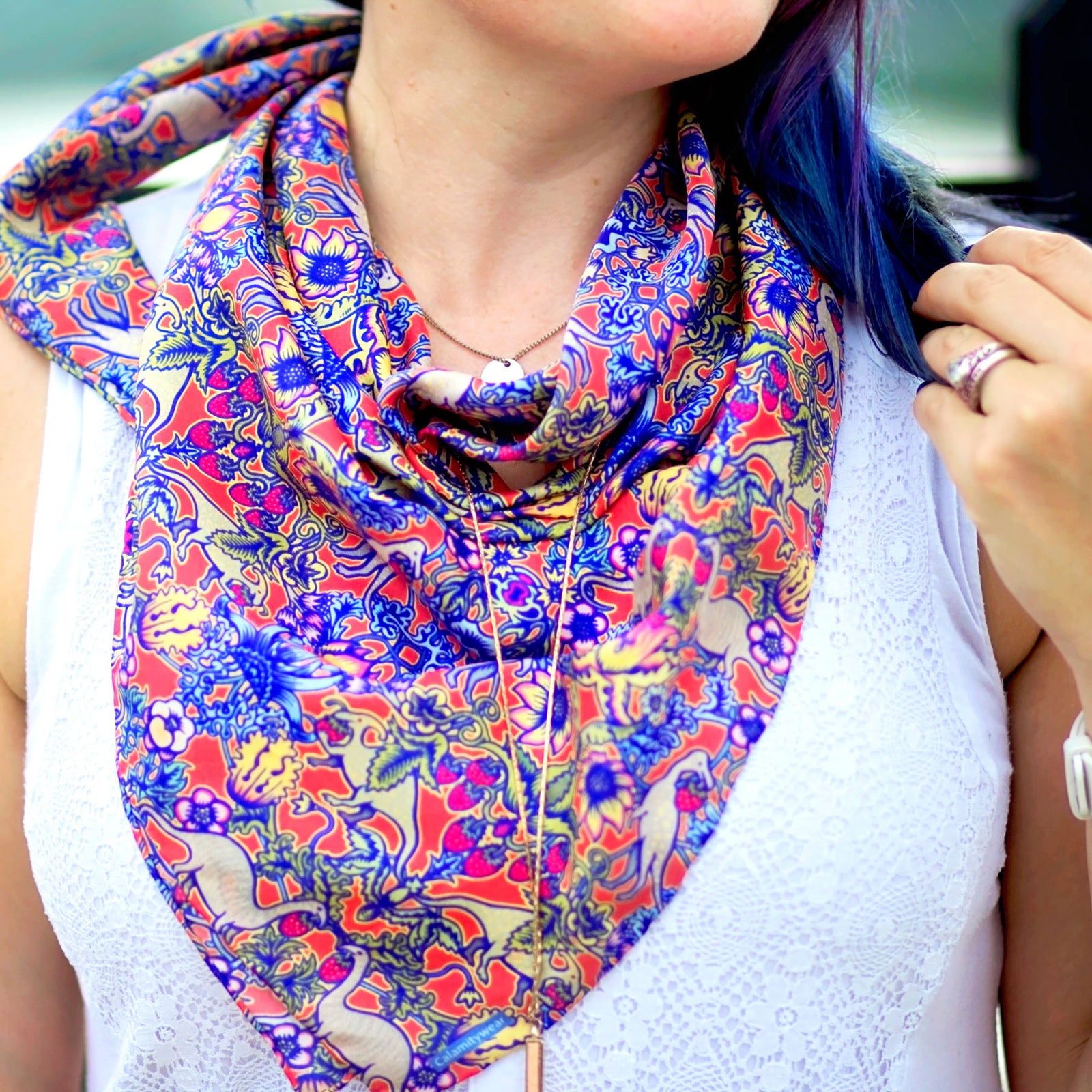
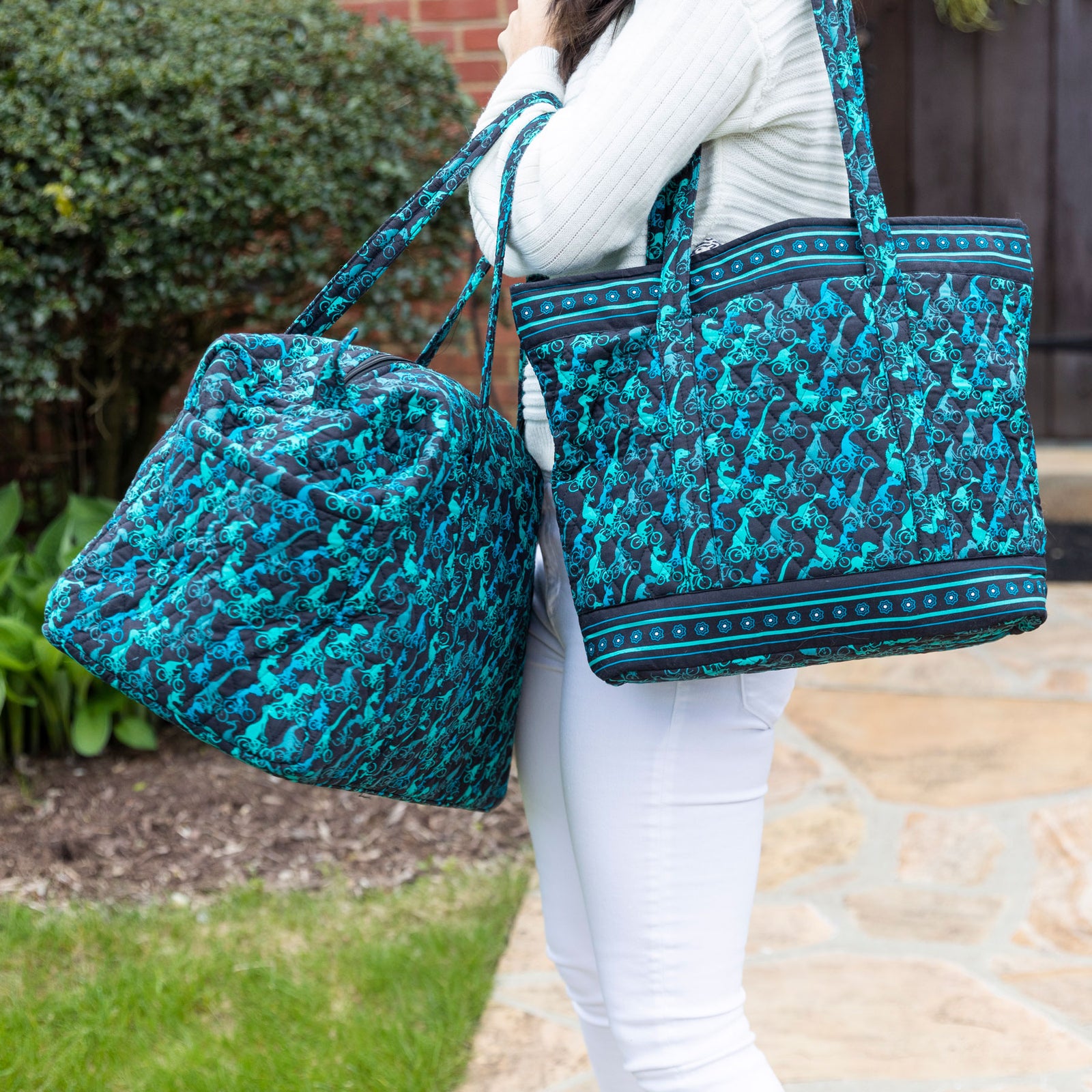
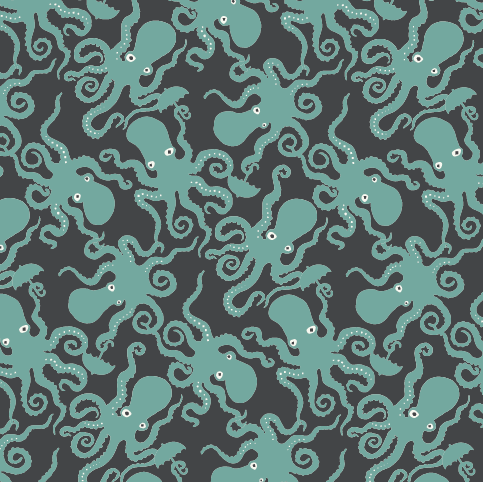

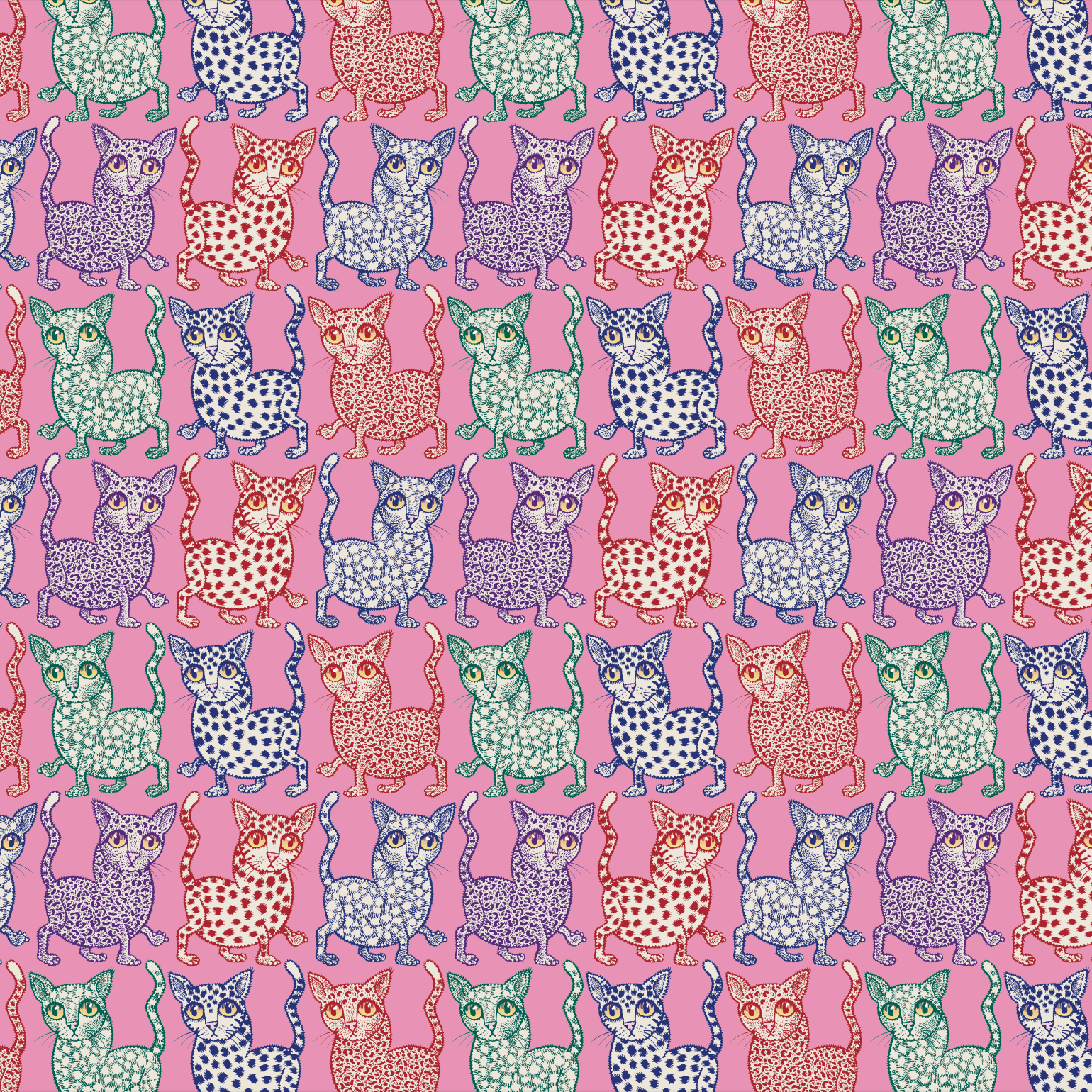

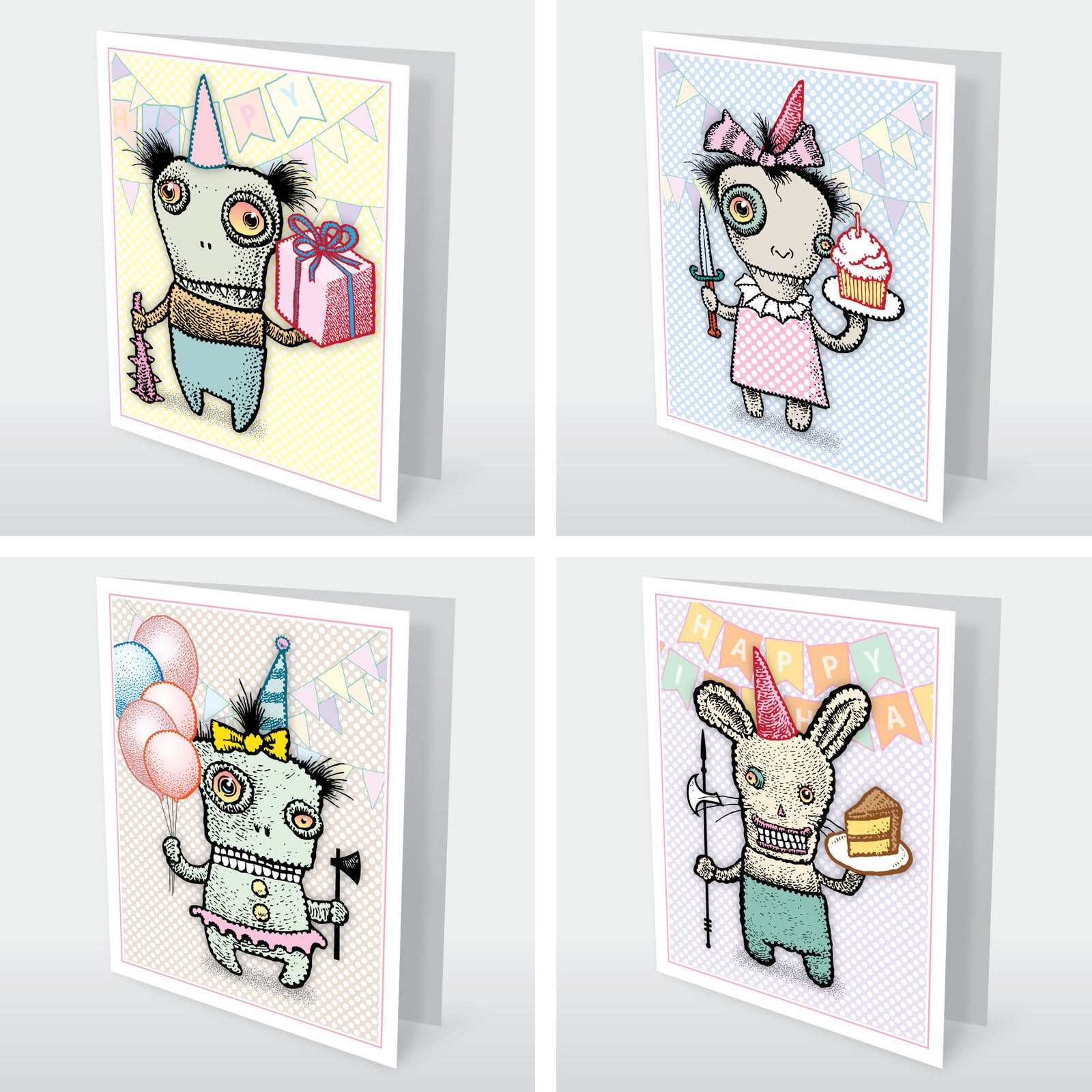
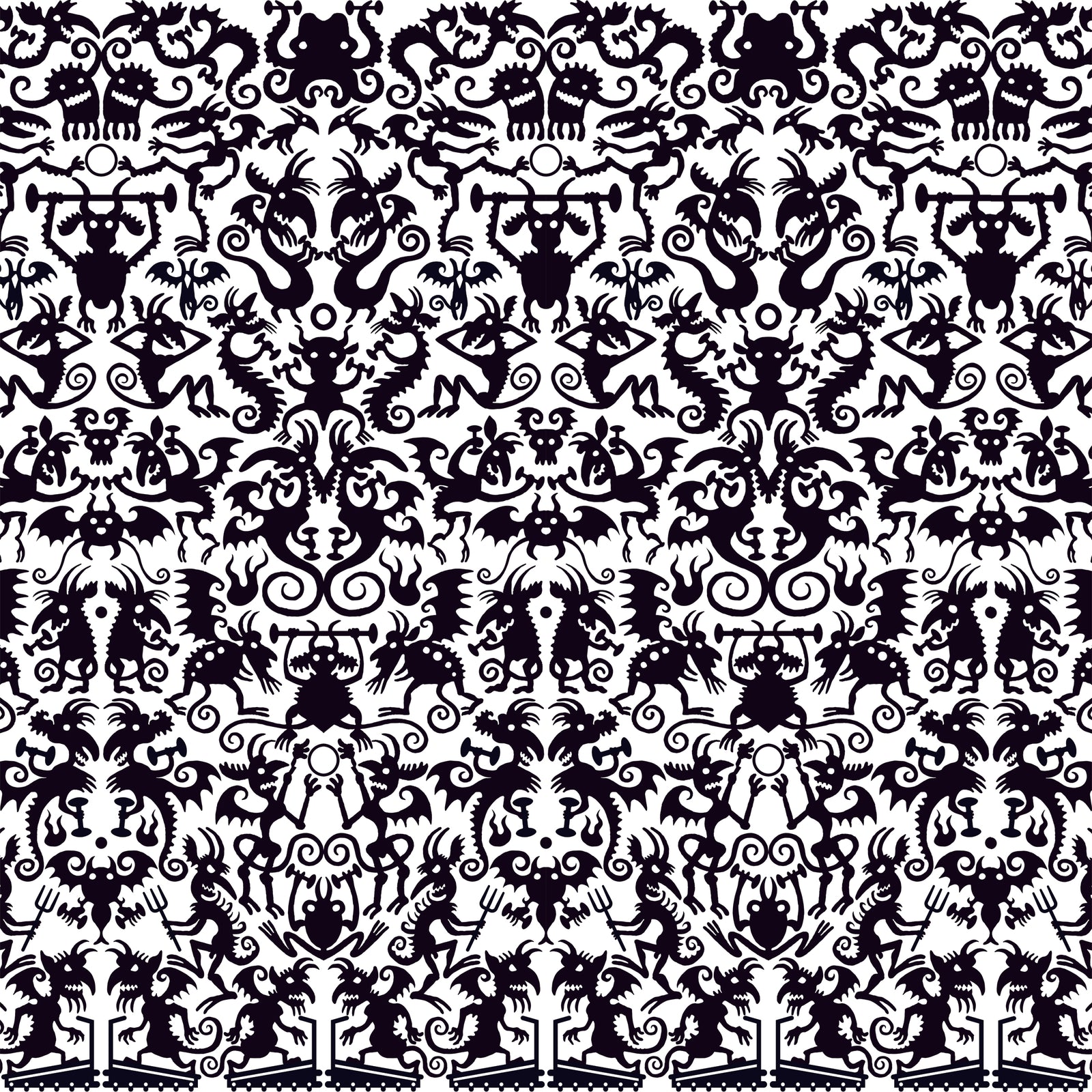
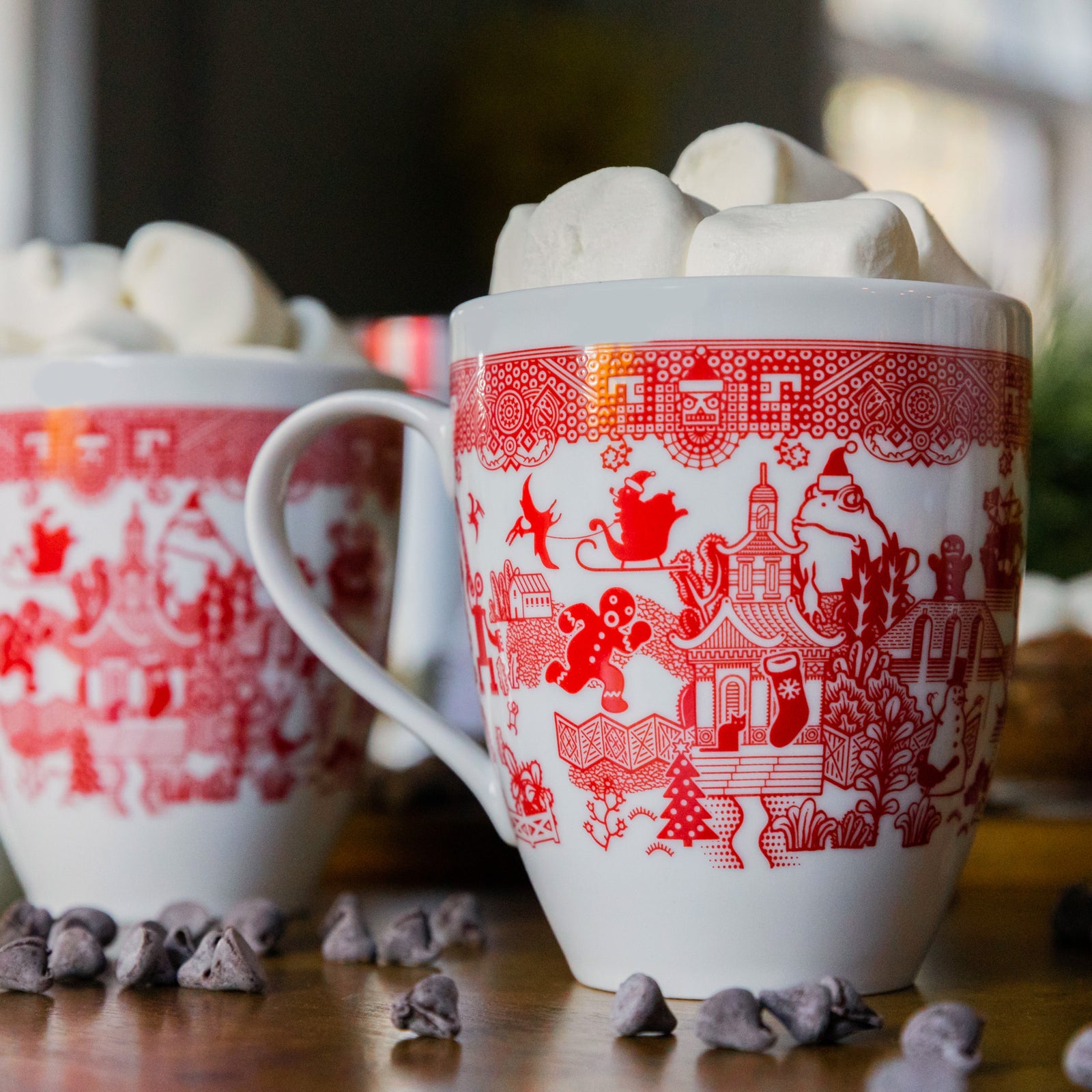

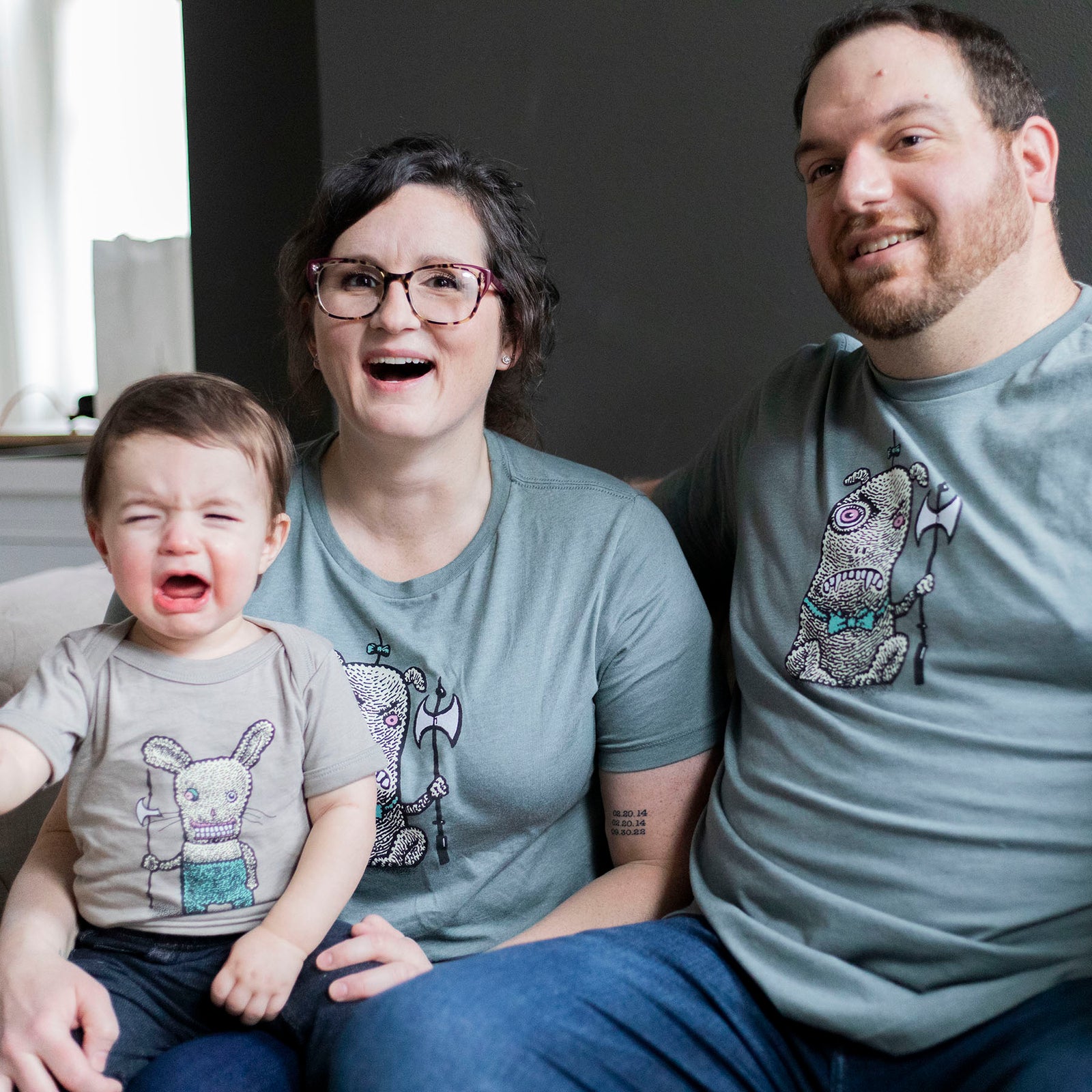
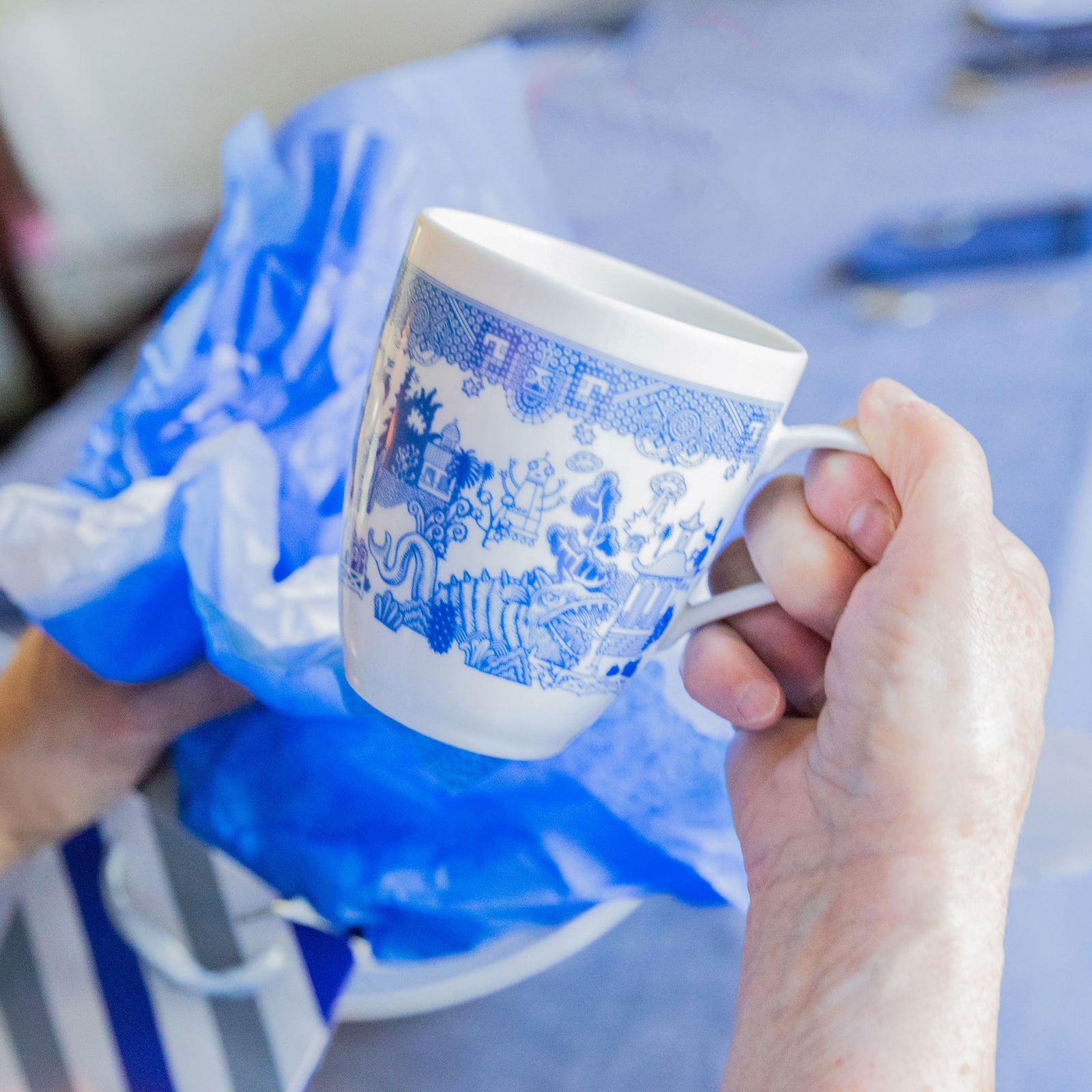


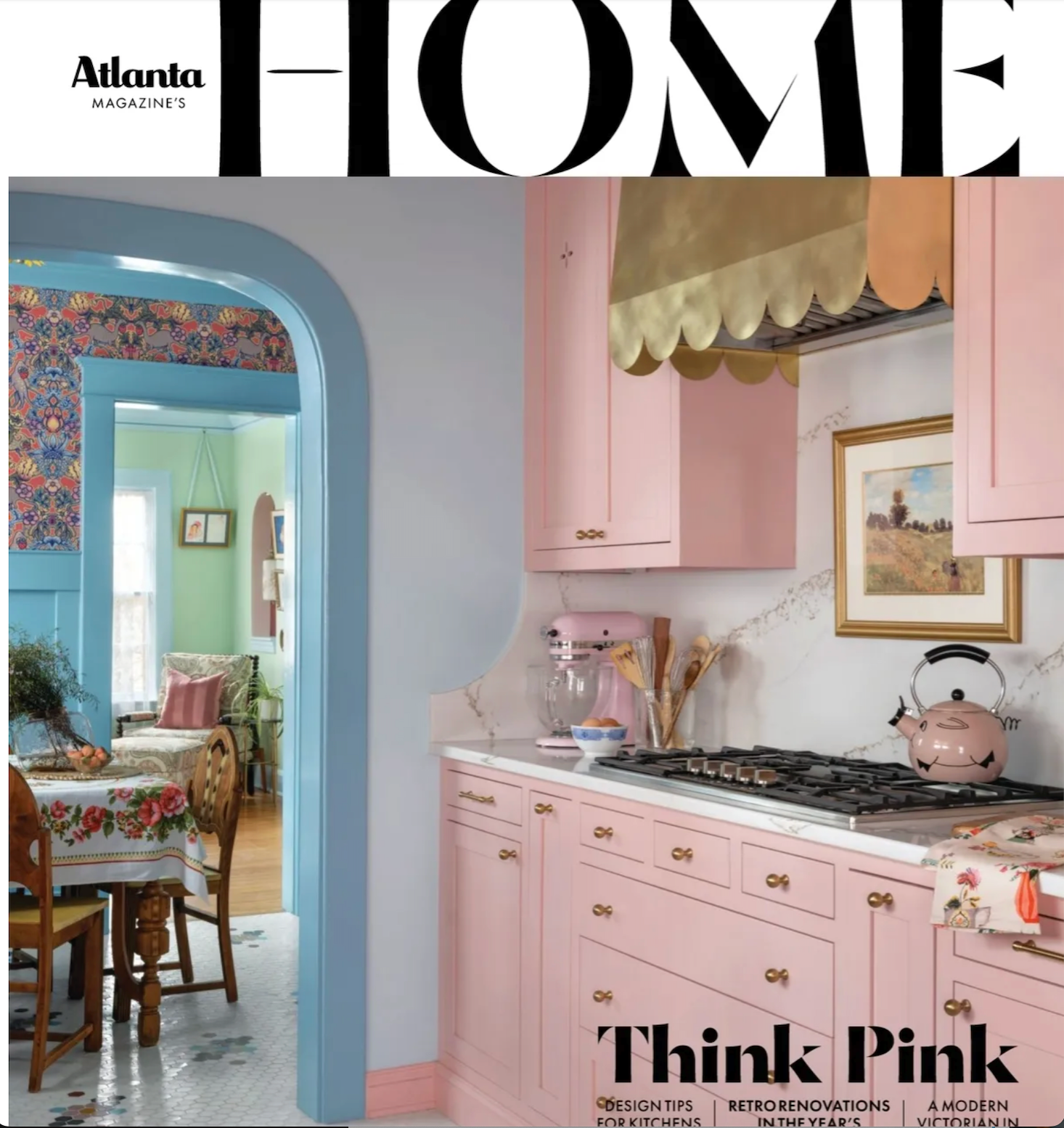
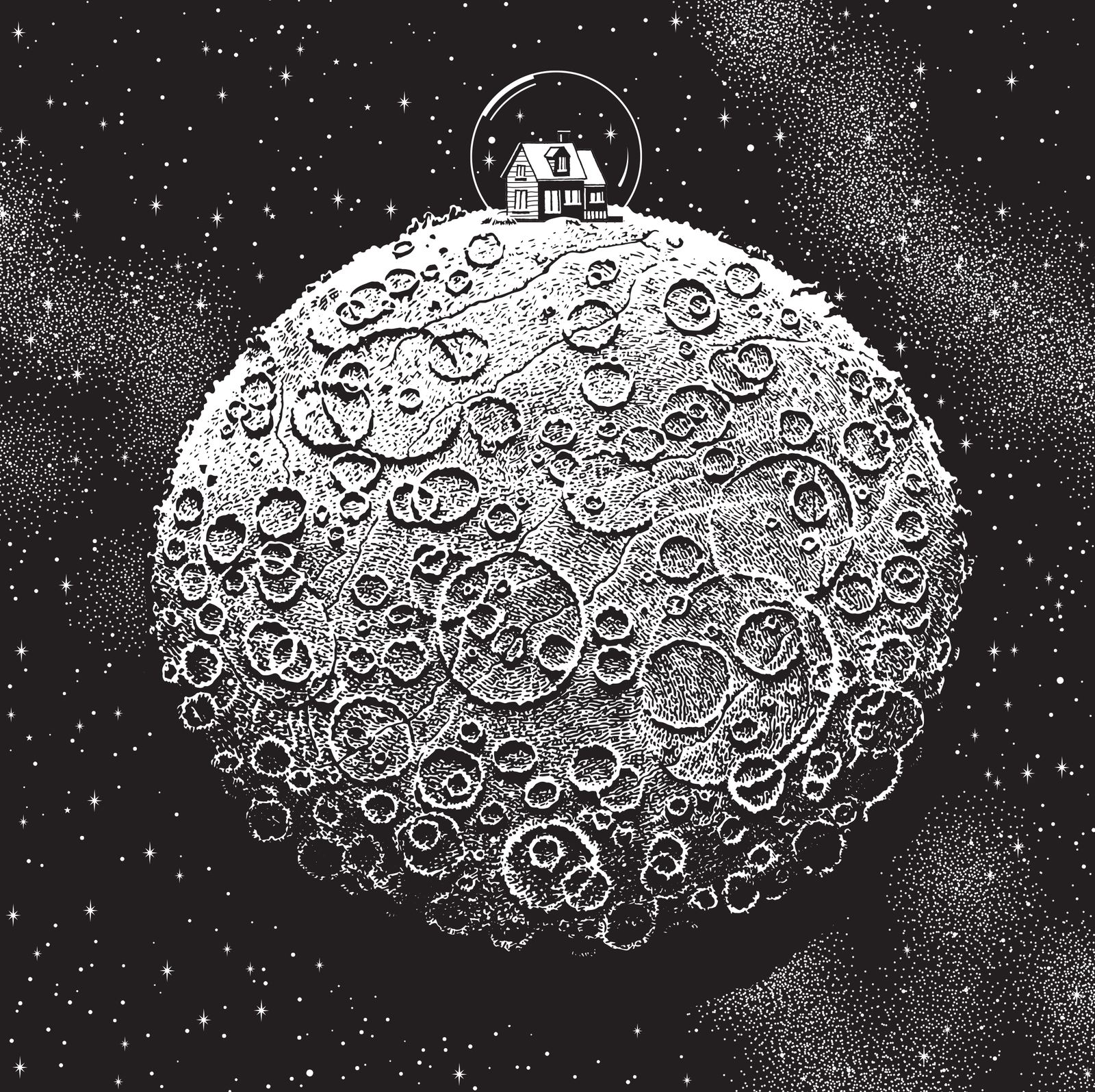


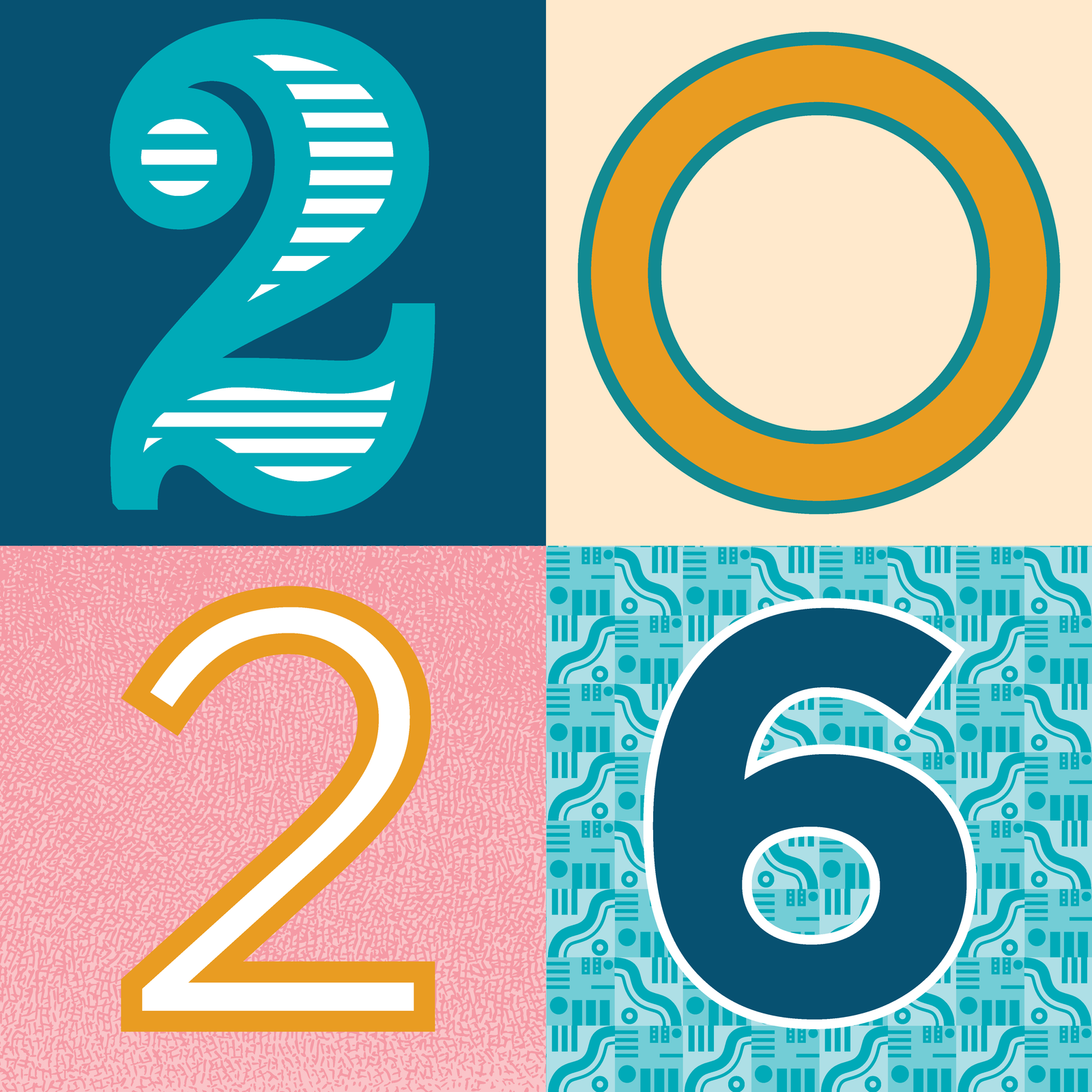
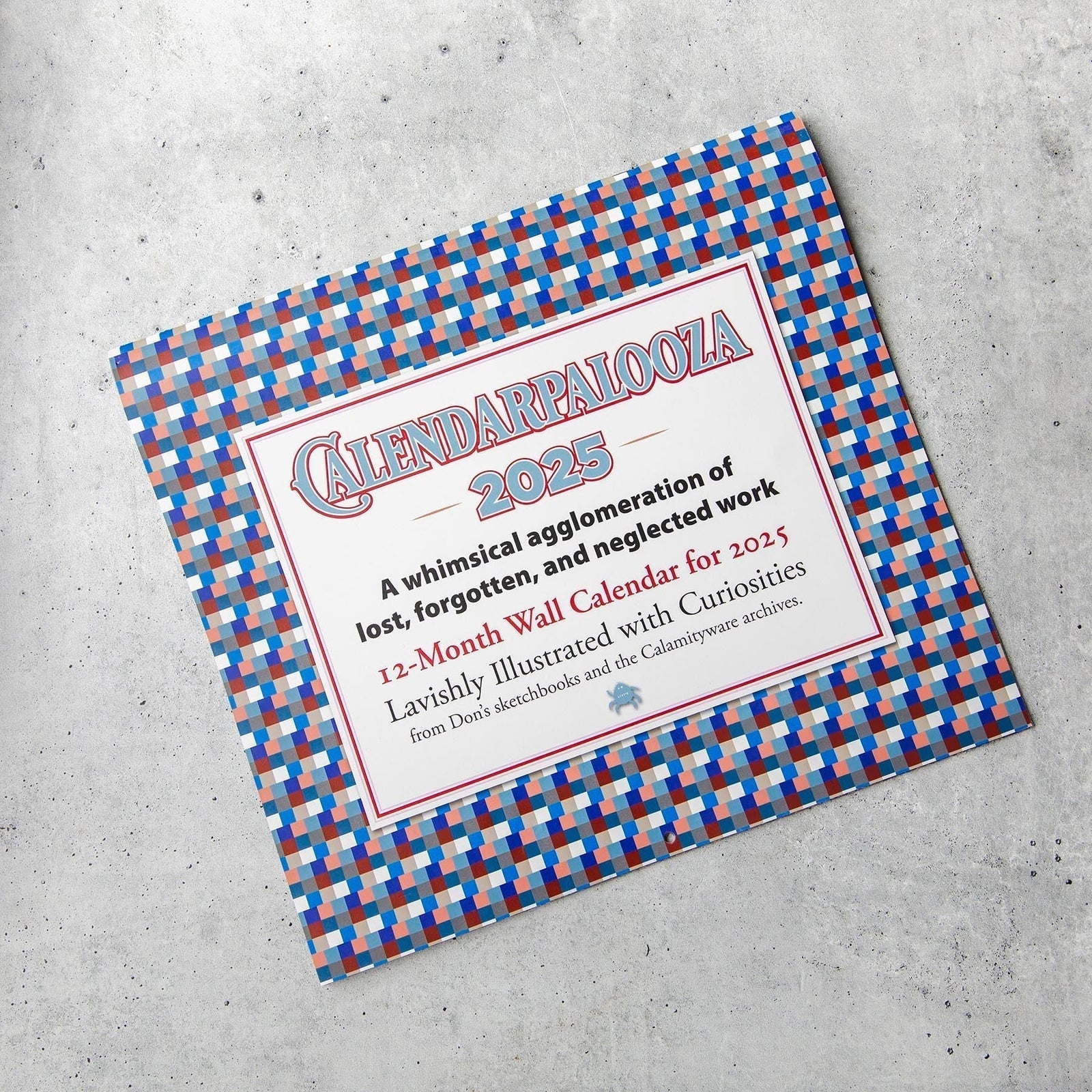
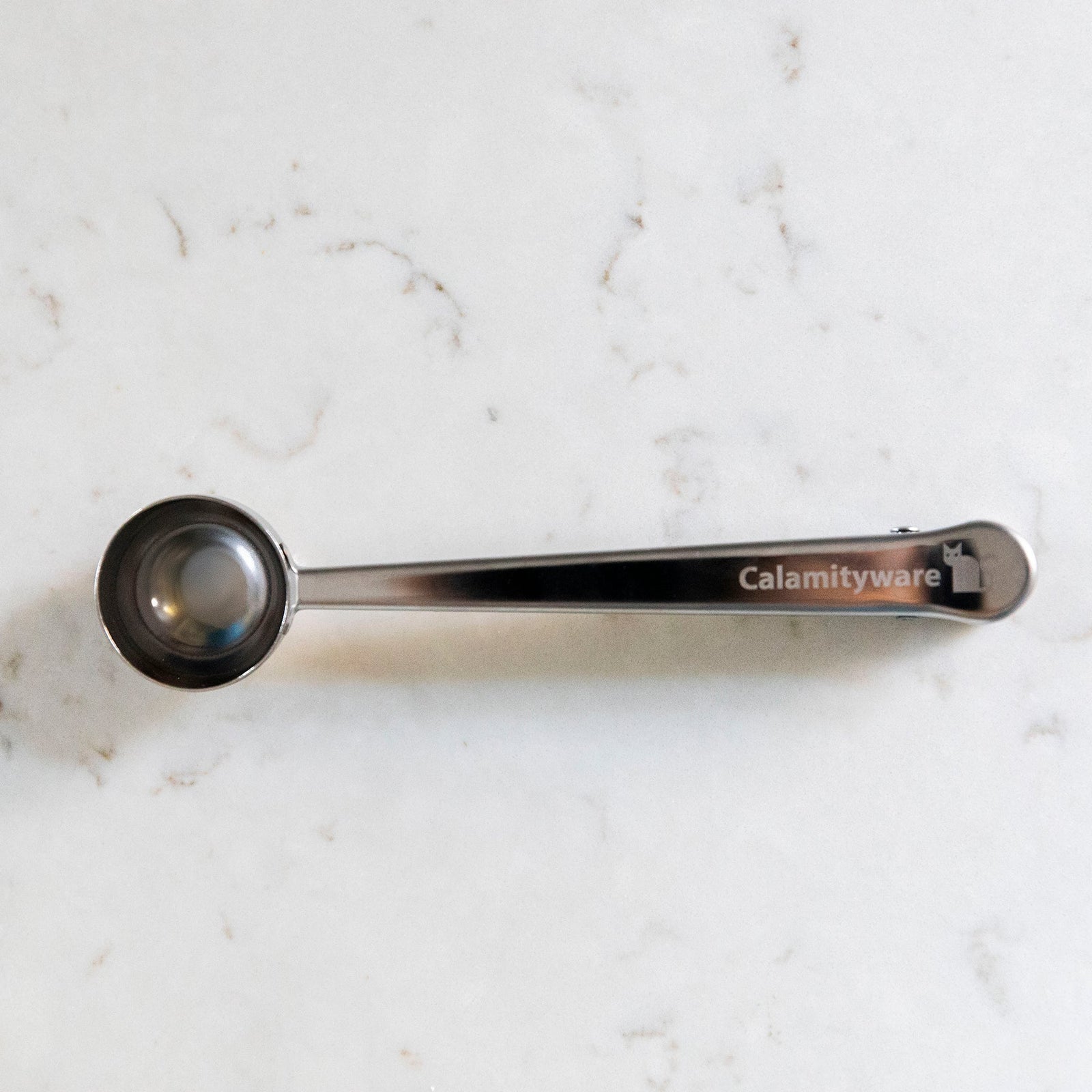
Stephanie Galbraith
October 07, 2024
Will you be getting placemats back in stock?